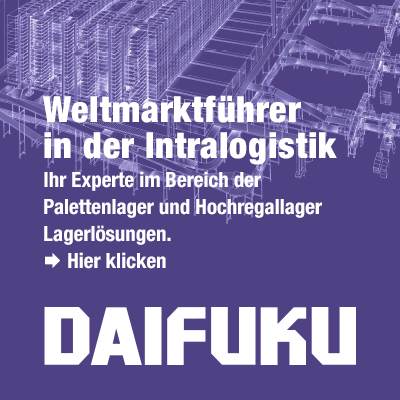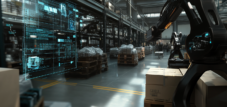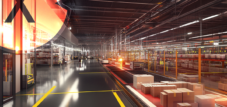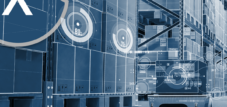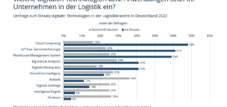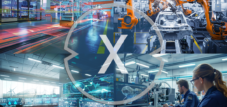Efficient placement of goods with Logistics 4.0: From the warehouse to the shelf – efficiency through smart logistics and intralogistics processes
Language selection 📢
Published on: November 17, 2024 / Update from: November 17, 2024 - Author: Konrad Wolfenstein
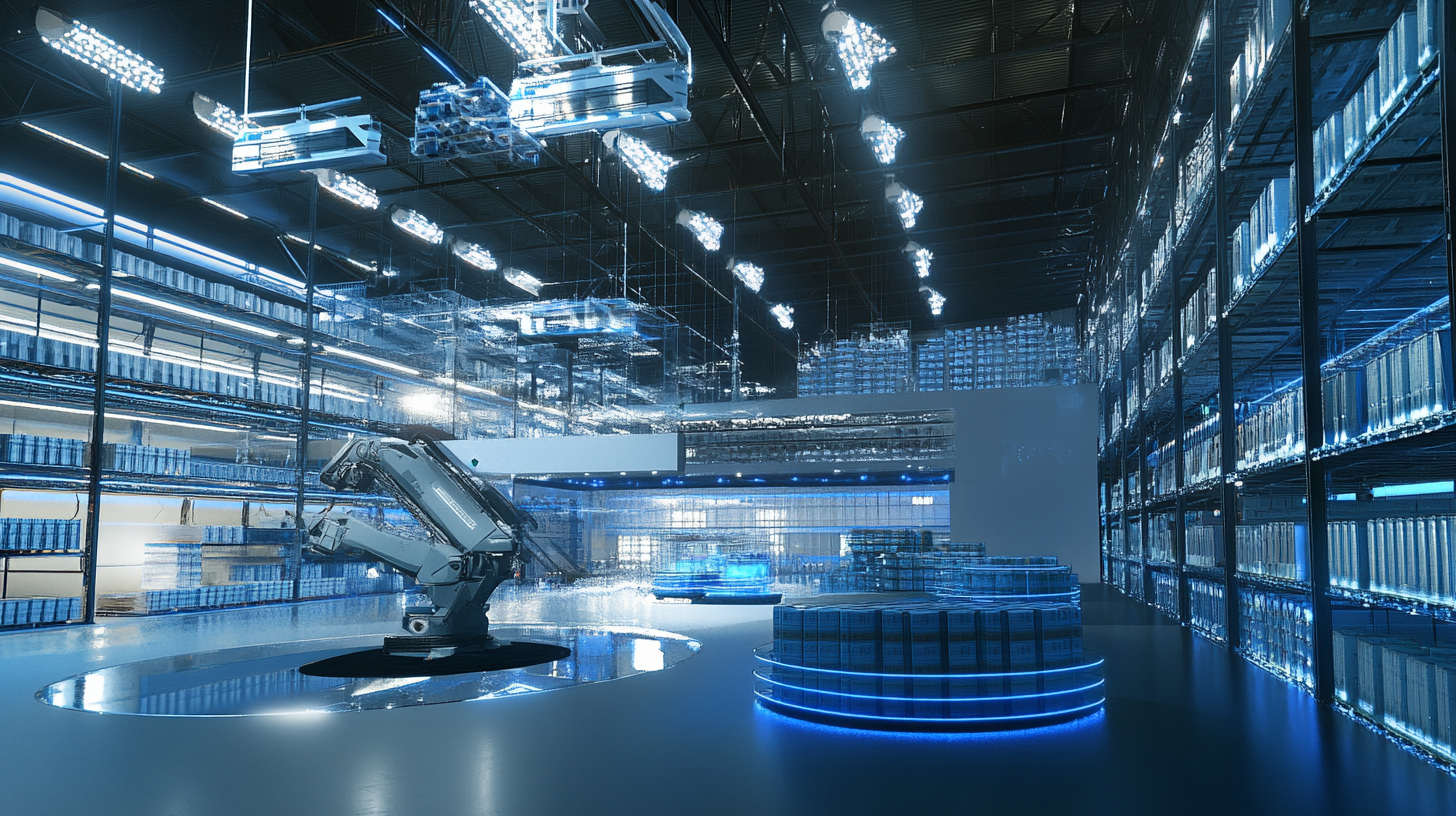
Efficient placement of goods with Logistics 4.0: From the warehouse to the shelf - efficiency through smart logistics and intralogistics processes - creative image: Xpert.Digital
⚙️💼 From the warehouse to the shelf: Optimized processes through automation
🌐📦🚀 Rapid digitalization has revolutionized almost all areas of the economy in recent years. One of the central drivers of this development is Logistics 4.0, which offers enormous opportunities, especially for companies involved in the storage and distribution of goods. Logistics 4.0 refers to the use of modern technologies such as the Internet of Things (IoT), artificial intelligence (AI), big data and automation to make logistics and intralogistics processes more efficient, faster and more cost-effective. The aim is to achieve a seamless and optimized flow of goods from the warehouse to the shelf, which benefits both companies and customers.
Basics of Logistics 4.0
🛠️📊 Logistics 4.0 stands for the digitalization and networking of processes along the entire supply chain. The aim is to achieve maximum transparency and flexibility through smart technologies. This is not just about the pure movement of goods, but also about the collection and use of data. This data can be used to control processes in real time, identify bottlenecks early and better meet customer requirements.
An example of the application of Logistics 4.0 is the use of IoT sensors in warehouses. These sensors can collect data such as temperature, humidity or the location of goods and feed them into a central system. This allows companies to ensure that sensitive products are stored in optimal conditions while enabling precise tracking.
Intelligent warehouse management: The first step to efficiency
🏗️🤖 The basis for efficient logistics processes begins in the warehouse. Modern warehouse management systems (Warehouse Management Systems, WMS) are able to digitally coordinate all processes in the warehouse. Using algorithms, they can decide which goods are stored where to ensure short distances and quick access. This not only saves time but also costs.
Another innovation in the field of warehouse logistics are autonomous transport robots. These robots can automatically bring goods to their storage location or prepare them for shipping. They are equipped with sensors that prevent collisions and enable safe navigation. This increases efficiency while relieving human workers of monotonous tasks.
Importance of intralogistics
🏭🔄 Intralogistics, i.e. internal logistics, plays a crucial role in Logistics 4.0. It includes all processes that take place within a company to move and provide goods. Smart intralogistics solutions ensure that goods movements are optimally coordinated and that there are no unnecessary delays.
A central element here is the digitalization of interfaces. By using technologies such as RFID (Radio Frequency Identification), flows of goods within a company can be tracked seamlessly. For example, you can see which products are currently being picked or which are already ready for shipping. This transparency enables more efficient planning and control of processes.
The way to the shelf: automation in retail
🛍️🚚 The advantages of Logistics 4.0 don't end in the warehouse. The route of goods to the shelf can also be optimized using smart technologies. An example of this is the use of autonomous delivery vehicles. These can deliver goods directly to retailers without the need for human intervention. In combination with AI-supported planning tools, delivery times and routes can be optimized so that costs and emissions are minimized.
In retail itself, smart shelving systems ensure optimal placement of products. These shelves are equipped with sensors that monitor current inventory and can automatically trigger reorders when a product is running low. This not only ensures that customers have access to the products they want at all times, but also reduces the effort required for manual inventory controls.
Challenges and opportunities
⚖️📈 Despite the numerous advantages that Logistics 4.0 offers, there are also challenges that companies must overcome during implementation. One of the biggest hurdles is the integration of existing systems into a digital infrastructure. Many companies still have outdated technologies that are not easily compatible with modern solutions. Investments in new hardware and software are required here.
Another challenge is data protection. Since Logistics 4.0 is based on the collection and processing of large amounts of data, companies must ensure that sensitive information is protected. This requires not only technical measures, but also training for employees to create awareness of the importance of data security.
On the other hand, Logistics 4.0 offers enormous opportunities for companies. It not only enables greater efficiency and lower costs, but also better adaptation to customer needs. By analyzing data, companies can identify trends at an early stage and adapt their offerings accordingly. This gives them a competitive advantage in an increasingly dynamic market.
Future of logistics: sustainability and innovation
🌱🔋 Another important aspect that is becoming increasingly important in Logistics 4.0 is sustainability. By using modern technologies, emissions can be reduced and resources can be used more efficiently. Autonomous vehicles and drones equipped with environmentally friendly drives could play a central role in the future. Intelligent planning tools also make it possible to avoid empty runs and minimize energy consumption.
Innovations such as 3D printing could also permanently change the logistics industry. The possibility of printing products directly on site could eliminate long transport routes. This would not only save costs, but also protect the environment.
Efficient and customer-focused approach
✨🚀 Logistics 4.0 opens up new opportunities for companies to make their processes more efficient and customer-oriented. From the warehouse to the shelf, smart technologies ensure seamless and optimized movement of goods. Despite the challenges associated with implementation, the benefits clearly outweigh the negatives. Companies that invest in the digitalization of their logistics processes at an early stage will benefit from greater competitiveness in the long term.
In a world increasingly characterized by speed and flexibility, Logistics 4.0 is no longer just an option, but a necessity. It is the key to future-proof, sustainable and successful logistics.
📣 Similar topics
- 📦 Efficiency through automation in warehouse logistics
- 🚁 Drones are revolutionizing inventory
- 🤖 Robots in intralogistics: More than just helpers
- 🚚 Driverless transport systems optimize warehouse processes
- 🔍 Intelligent systems improve material flow
- ⏱️ Faster and more precise transport in distribution logistics
- 🌐 Real-time transparency through information logistics
- 📡 RFID technology: The key to efficient tracking
- 🛍️ Customer-centered logistics: Flexibility as a success factor
- 🔐 Challenges and opportunities of Logistics 4.0
#️⃣ Hashtags: #Logistics4.0 #warehouse automation #transparency #customer centricity #data security
Xpert partner in warehouse planning and construction
🌟📦 Efficient placement of goods
⏱️🛍️ The warehouse manager must establish a set of criteria and rules for the placement of goods based on the real order demand in the warehouse (rotation, product type, etc.). By implementing warehouse management software, the risk of errors in this process is minimized and slotting, i.e. the management of storage positions in the warehouse, is optimized.
How can digital twins and artificial intelligence improve and optimize the process?
The placement of goods in the warehouse, also known as slotting, is a crucial process for optimizing warehouse logistics. By using digital twins and artificial intelligence (AI), this process can be significantly improved and made more efficient. Here are the key benefits and improvements that can be achieved through these technologies:
🔄💡 Digital twins: simulation and real-time analysis
A digital twin is a virtual representation of the physical warehouse that is updated in real time. This technology offers several advantages for optimizing product placement:
Virtual simulation of warehouse layouts
Before changes are made in the warehouse, they can be simulated using the digital twin. This allows precise analysis of the impact of layout changes, such as moving shelves or changing the placement of certain products. This means optimizations can be tested risk-free before they are implemented in practice[2][3].
Real-time monitoring and transparency
The digital twin continuously collects data about the condition of the warehouse, including the position of goods and transport vehicles. This real-time information enables immediate adjustments in the event of deviations or bottlenecks, improving efficiency[3].
Optimization of walking paths
By analyzing the movement patterns of pickers and vehicles in the warehouse, the digital twin can suggest the most efficient ways to reach products faster. This reduces unnecessary trips and saves time[3].
🤖🔍 Artificial Intelligence: Automated optimization and predictions
AI can help improve product placement by processing large amounts of data in real time:
Demand forecasting and dynamic adaptation
AI systems analyze historical data as well as current trends to predict future demand. Based on this, frequently requested items can be placed in easily accessible locations, while less requested products are stored further back. This leads to a dynamic adjustment of the warehouse layout to the actual order demand[5][7].
Automated inventory management
AI can automatically monitor inventory and trigger reorders based on predefined thresholds. This minimizes the risk of overstocking or stockouts and ensures optimal utilization of the available storage space[5].
Optimization of the warehouse layout
AI continuously analyzes data about item locations, picking frequency and movement patterns. Using this information, it suggests more efficient warehouse layouts that reduce labor and increase productivity[6][7].
🛠️🌐 Synergy between digital twins and AI
The combination of digital twins and AI offers particularly great added value:
Continuous improvement through feedback loops
The digital twin provides real-time data about the current condition of the warehouse, while AI analyzes this data and makes suggestions for optimization. This constant feedback loop allows both technologies to improve each other and continuously optimize the warehouse[4].
Proactive maintenance and security
Using sensors, digital twins can detect potential problems such as broken infrastructure or blocked emergency exits. AI can use this information to proactively suggest maintenance actions or minimize security risks[3].
🔄📦 Merchandise placement process
By using digital twins and artificial intelligence, the process of placing goods in the warehouse not only becomes more efficient, but also more flexible and adaptable to changing market conditions. These technologies enable more precise planning, real-time adjustments and continuous optimization of entire warehouse operations.
📣 Similar topics
- 🚀 Optimization of product placement through technology
- 🤖 Digitalization and AI in the warehouse process
- 🔄 Make slotting more efficient with a digital twin
- 💡 Modern warehouse management with AI
- 🔍 Real-time analysis for better warehouse logistics
- 📊 Data-driven warehouse optimization
- 🧠 Intelligent inventory management through AI
- 🌐 Synergies between technology and logistics
- 🔧 Proactive maintenance through digital technologies
- 📦 Efficient warehouse processes through technical innovation
#️⃣ Hashtags: #Efficiency #Warehouse Management #ArtificialIntelligence #DigitalTwins #LogisticsOptimization
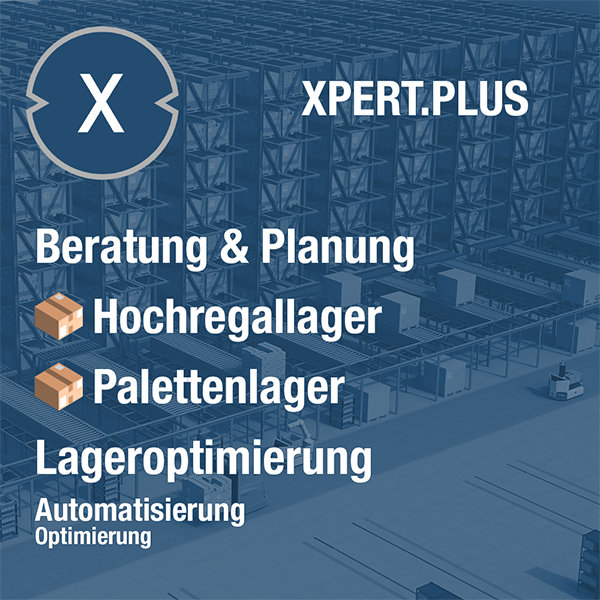
Xpert.Plus warehouse optimization - high-bay warehouses such as pallet warehouses consulting and planning
We are there for you - advice - planning - implementation - project management
☑️ SME support in strategy, consulting, planning and implementation
☑️ Creation or realignment of the digital strategy and digitalization
☑️ Expansion and optimization of international sales processes
☑️ Global & Digital B2B trading platforms
☑️ Pioneer Business Development
I would be happy to serve as your personal advisor.
You can contact me by filling out the contact form below or simply call me on +49 89 89 674 804 (Munich) .
I'm looking forward to our joint project.
Xpert.Digital - Konrad Wolfenstein
Xpert.Digital is a hub for industry with a focus on digitalization, mechanical engineering, logistics/intralogistics and photovoltaics.
With our 360° business development solution, we support well-known companies from new business to after sales.
Market intelligence, smarketing, marketing automation, content development, PR, mail campaigns, personalized social media and lead nurturing are part of our digital tools.
You can find out more at: www.xpert.digital - www.xpert.solar - www.xpert.plus



